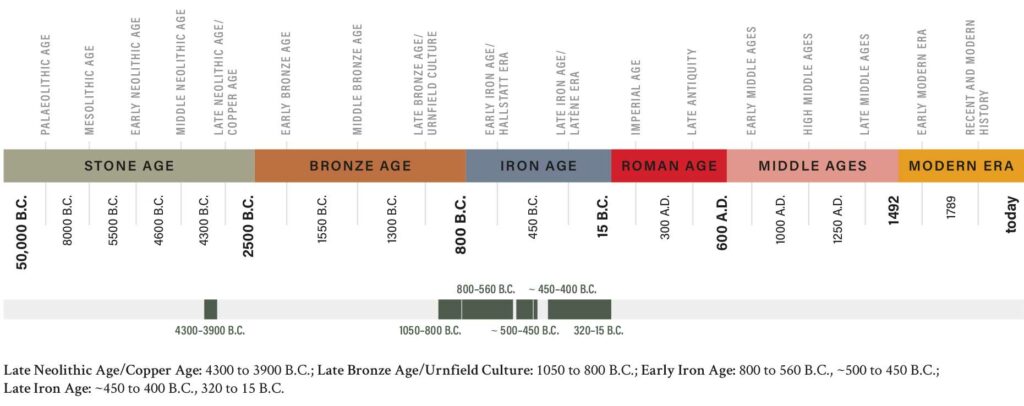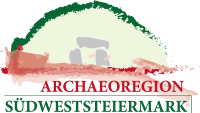
Burgstallkogel hill near Grossklein is one of the most prominent archaeological sites of the late Bronze Age and the Early Iron Age in Europe (9th-6th century B.C.).
With almost 700 preserved burial mounds surrounding a hilltop settlement on the summit of the Burgstallkogel, the approximately 16 km long low hill ridge, between the Sulm and Saggau rivers, is one of the best-preserved archaeological landscapes of this period. An exclusive position at the eastern access to the settlement is occupied by the four princely burial mounds in Kleinklein, which, thanks to the bronze masks and bronze armor, are among the richest graves of the period.
For almost two centuries the landscape around the Hallstatt princely seat on Burgstallkogel hill near Grossklein has been the focus of archaeological research, which in the 19th century was devoted to the burial mounds and only in the 20th century focused on the settlement as well. A special feature of this cultural landscape around Grossklein are the today well visible and preserved tumulus fields (Sulmtal necropolis). The exact number of tumuli is unknown, documents from the 19th century refer to 1124 tumuli. Although today we can count about 700 tumuli, it can be assumed that once the necropolis included about 2000 tumuli. Most of them are located within a radius of 1 km as the crow flies from the settlement.
The core of the necropolis with about 500 tumuli extends to the west and south of the settlement on the Burgstallkogel. The burial mounds in the center of the necropolis vary in size, from small ones, barely more than 2 m in diameter, to large ones with more than 40 m in diameter. North of the settlement there is another large tumulus field with 160 recorded tumuli. Along the entrance to the settlement from the east, another 30 tumuli can be identified. A tumulus was usually built for one person. They were exclusively cremations in an urn or directly in a burial pit with grave goods such as pottery, bronze and iron objects.
At the foot of the Burgstallkogel, on a high terrace of the Saggau river, there is the Kleinklein burial ground. In this separate part of the necropolis were the four largest burial mounds richly furnished with grave goods, Hartnermichelkogel hill 1 and 2, Pommerkogel and Kröllkogel hills. According to the observations published so far, three of the four princely burial mounds lie in chronological sequence. At the end of the 8th century B.C. the Hartnermichelkogel 1 was laid out, followed by the Pommerkogel in the 7th century B.C .and the Kröllkogel, which is dated to the first half of the 6th century B.C. With the construction of the last, probably also the richest princely grave, the Kröllkogel, at the beginning of the Late Hallstatt period, the hillside burials in the other tumuli groups around Kleinklein seem to have ended.
Text: Dr. Marko Mele

